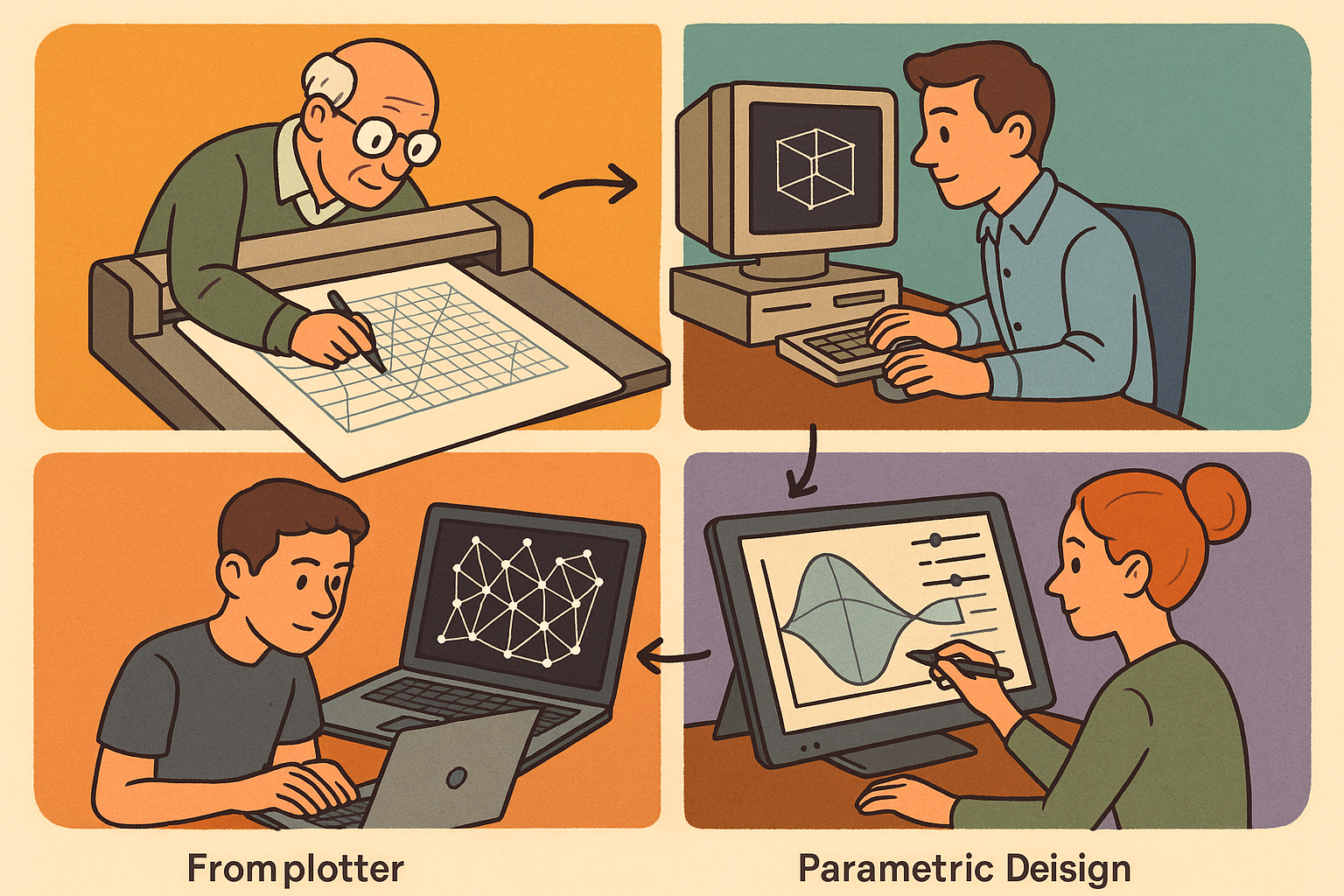Your Cart is Empty
Customer Testimonials
-
"Great customer service. The folks at Novedge were super helpful in navigating a somewhat complicated order including software upgrades and serial numbers in various stages of inactivity. They were friendly and helpful throughout the process.."
Ruben Ruckmark
"Quick & very helpful. We have been using Novedge for years and are very happy with their quick service when we need to make a purchase and excellent support resolving any issues."
Will Woodson
"Scott is the best. He reminds me about subscriptions dates, guides me in the correct direction for updates. He always responds promptly to me. He is literally the reason I continue to work with Novedge and will do so in the future."
Edward Mchugh
"Calvin Lok is “the man”. After my purchase of Sketchup 2021, he called me and provided step-by-step instructions to ease me through difficulties I was having with the setup of my new software."
Mike Borzage
Design Software History: The Evolution and Impact of Mathematica in Engineering Computation and Design Software
June 16, 2024 3 min read


Introduction to Mathematica and Engineering Computation
In the rapidly evolving fields of engineering and design, the need for powerful computational tools has never been more critical. One such tool that has stood the test of time and continually pushed the boundaries of what is possible in engineering computation is Mathematica. Founded by Stephen Wolfram in 1988, Mathematica set out to revolutionize computational science by providing a robust platform for symbolic computation, numerical analysis, and data visualization.
Mathematica’s importance in engineering computation cannot be understated. It has found broad applications across various engineering disciplines, including mechanical, electrical, civil, and aerospace engineering. Its key features, such as symbolic algebra, algorithm development, and visualization tools, have enabled engineers to model, simulate, and solve complex problems with unprecedented accuracy and efficiency.
Mathematica's Historical Development
Early Years and Innovations
The initial release of Mathematica was met with enthusiasm from both academic and professional communities. Its pioneering features, including the notebook interface and robust symbolic computation capabilities, set it apart from other software available at the time.
Key Versions and Milestones
- Mathematica 2.0: This version introduced a host of new functions and significant interface improvements, making it more user-friendly and efficient.
- Mathematica 3.0: With enhanced graphics capabilities and a more sophisticated user interface, this version further solidified Mathematica's position as a leading tool in computational science.
- Mathematica 6.0: The integration of dynamic interactivity and real-time data marked a significant leap forward, allowing users to interact with their computations in more intuitive and impactful ways.
Modern Era
The introduction of the Wolfram Language represented a significant evolution in Mathematica’s capabilities. This powerful language extended Mathematica’s functionality into new domains, including cloud capabilities and machine learning integration, ensuring that it remained at the forefront of technological advancements.
Contributions to Engineering and Design Software
Core Technologies and Modeling
At its core, Mathematica excels in solving differential equations and providing symbolic solutions, which are fundamental in engineering analysis. Its ability to handle geometric modeling and perform detailed simulations has made it an invaluable tool in engineering design.
Integration with CAD and CAE
Mathematica's interoperability with other software tools like AutoCAD and SolidWorks has been another key aspect of its success. This integration allows engineers to perform comprehensive structural analysis and fluid dynamics simulations, enhancing the design and testing phases of engineering projects.
Impact on Innovation and Research
By enabling complex simulations and optimizations, Mathematica has significantly impacted both academic research and industrial applications. Its contributions have paved the way for numerous breakthroughs, allowing for more efficient and effective engineering solutions.
Key Figures and Their Contributions
Stephen Wolfram
As the visionary behind Mathematica and the Wolfram Language, Stephen Wolfram has made significant contributions to the field of computational science. His work in symbolic computation has been instrumental in shaping the capabilities of modern engineering tools.
Key Contributors and Collaborators
The development of Mathematica has been a collaborative effort involving numerous talented individuals. Development teams have played crucial roles in advancing the software, while influential researchers and engineers have utilized Mathematica in groundbreaking projects, further demonstrating its versatility and impact.
Mathematica's Community and Ecosystem
The Wolfram Community has been a vibrant hub for sharing and collaboration, fostering an environment where users can exchange ideas and solutions. Moreover, Mathematica has had a profound educational impact, helping to train the next generation of engineers and scientists in computational techniques.
Conclusion
In summary, Mathematica's role in engineering computation has been pivotal. From its historical milestones to its technological advancements, Mathematica has continually pushed the boundaries of what is possible in design and engineering software.
Looking to the future, ongoing developments and potential applications will ensure that Mathematica remains a key player in the evolving landscape of design software and engineering computation. Its robust capabilities and continuous innovation will undoubtedly keep it at the forefront of computational science for years to come.
Also in Design News

Design Software History: From Plotters to Procedural Intent: A Technical History of Generative and Parametric Design Software
January 04, 2026 13 min read
Read More
Semantic Meshes: Enabling Analytics-Ready Geometry for Digital Twins
January 04, 2026 12 min read
Read MoreSubscribe
Sign up to get the latest on sales, new releases and more …



